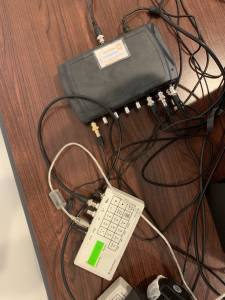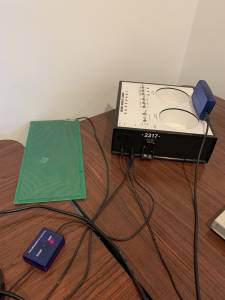UPDATE on Photos: Remote transmit power of the Frequency Research Lab Setup is directly proportional to quality and size of high resolution digital photos. The best photos (20-60 times better) today are produced by iPhone 12 Pro cameras or newest with the latest iOS in RAW mode (normal mode produces modified photos which do not work properly). Photos taken with an iPhone Tripod will be at least 2 times better because of improved resolution. See the Apple support site for how to turn on RAW mode.
A new iPhone 14 just produced a 92MB perfect RAW image of dog who is a client in the Frequency Research Foundation Photoanalysis Clinic (we help people, dogs, and buildings). Consider this in comparison to a typical 2MB JPEG file image which is altered by the iPhone software. The RAW image is more than 50 times better. This will radically reduce your run times and the power output will overwhelm pathogens better than direct connect physical devices.
Users with other iPhone models will need to use the Moment Pro Camera App in RAW mode.
SG2: The SG1 has now been upgraded to SG2 which is 10-100 times more powerful. Longevity Research sells the SG2 and has some of my old SG1s that still work great for less money. Contact Carol at livingnow.net
For SG2 users, you must position the DMI in the photo in the center of the SG2 instead of in the upper quadrant for an SG1.
All DMIs and ABPAs should be upgraded to the latest software at the service company run by the inventor of these systems. Significant upgrades have evolved during COVID. Frequency Research Foundation has dozens of these systems and they are all being upgraded. Contact Carol at livingnow.net to schedule your upgrades.
Following these instruction can reduce your run times from days or weeks to a few hours and radically improve the effectiveness of your frequency work.
The standard Frequency Research Lab setup for delivery of remote frequencies is based on more than two decades of frequency research with leading inventors in the field. It is easily affordable for computer users and includes:
1. Computer – PC or Mac
2. F165 frequency generator (Spooky2 can be used with translation tool)
3. SG1 or SG2 transmitter
4. DMI board for digital photos
5. Harmony Evolution Chip to create more effective frequencies
6. Metapathia Hunter 4025, Biofilia, Hadoscan scanners
The photo above shows a DMI board properly placed on an SG1 transmitter. Our lab systems have SG8 amplifiers so that we can run up to 8 SG1s with one F165 frequency generator. Scanner earphones are placed on top of the SG1/SG2 and DMI.
The PDF in the link below shows exactly how to place a DMI on top of an SG1/SG2. Geometry is critical. Our labs use velcro tape to attach the DMI to the SG1 so that it can easily be adjusted to the optimal angle. The wrong angle or positioning will result in reduced or no effective frequency transmission!
For maximum power output the SG1/SG2 input port must be pointed towards magnetic north. The magnetic fields in your location are often distorted by buildings or machinery. Ask for a consult to get this right at [email protected] to make sure your system works properly.
The PDF also shows how to insert a Harmony Evolution Chip under the DMI for maximum response. Some trolls on the internet have complained that the Harmony Chip is useless. I make no claims for the Harmony Chip except to state that my testing shows my lab setup is about 10 times as effective as a lab without the chip.
Do your own testing!
If you have an SG8 amp, you can power up to 8 SG1s from a single frequency generator. In this case, you need only one Harmony Chip placed on the SG8 to affect up to 8 SG1 transmissions.
If you need assistance with equipment contact [email protected] and we will connect you with Longevity Research, LLC for hardware. They sell all our equipment. Frequency Research Foundation does not sell any equipment, only frequency data for use with recommended equipment. This allows us to be impartial about what equipment to use. We are only interested in what works the best given currently available hardware.
Frequency Research Foundation offers a consulting service to help you set up the equipment (highly recommended). Poor configuration can result in little or no signal output. Request a consult an [email protected].

